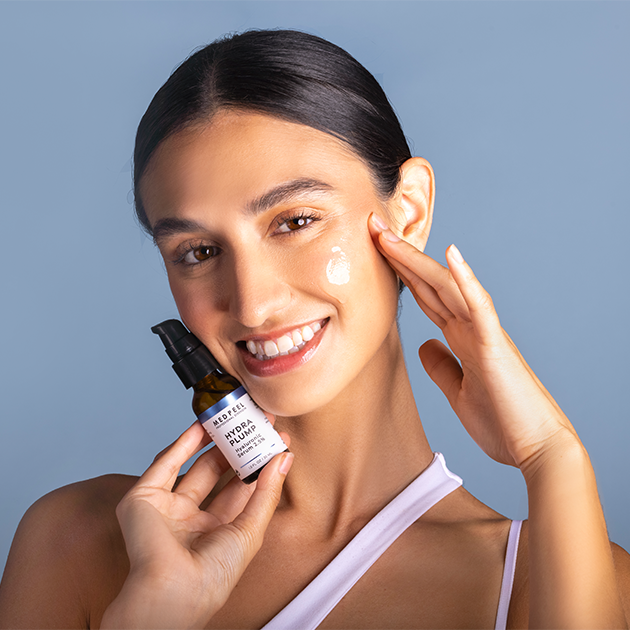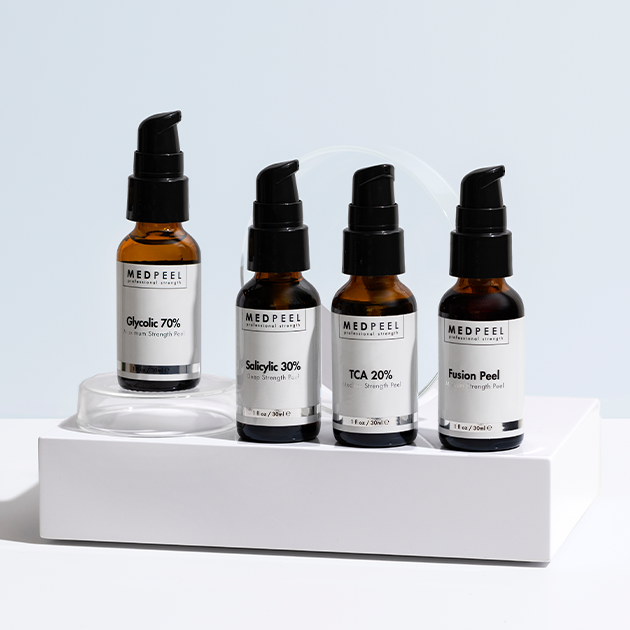
Ever flip over a skincare bottle and feel like you’re reading a foreign language? You're not alone. At Medpeel, we believe great skincare starts with great education—which is why we’re breaking down how to read a skincare label like a pro.
1. Start With the Ingredient List (INCI Format)
Skincare ingredients are listed in descending order of concentration. That means the first few ingredients make up the bulk of the formula. Look for active ingredients near the top—like glycolic acid, salicylic acid, or vitamin C—to know you’re getting real results.
Pro Tip: Ingredients used in concentrations under 1% can be listed in any order, so don't stress if you see fragrance near the top in some products—it could still be a tiny amount.
2. Understand Active vs. Inactive Ingredients
Active ingredients are the power players—they’re there to deliver results, like exfoliating, hydrating, or brightening. These are the ingredients that actually do the work—for example, Glycolic Acid, Retinol, Vitamin C etc.
Inactive ingredients help with texture, stability, preservation or delivery of the formula. These don’t directly treat the skin, but are still super important. For example, emulsifiers (like polysorbates, to mix oil and water), thickeners (like carbomer or xanthan gum to prevent separation and ensure a smooth texture), water, and fragrance. They make sure the active ingredients perform their best without breaking down.
With Medpeel, every active ingredient is thoughtfully formulated for professional-level results at home.
3. Watch for Irritants or Allergens
Scan for common irritants, especially if you have sensitive skin. These include:
-
Artificial fragrances
-
Essential oils (like citrus or peppermint)
-
Alcohols (some types can be drying)
Medpeel products are formulated without unnecessary fillers or irritants—because skincare should feel good and do good.
4. Know Your pH & Percentage
pH stands for potential of hydrogen—it’s a measure of how acidic or alkaline a substance is, on a scale of 0 to 14. For actives like acids, pH and percentage matter.
-
A 10% glycolic acid peel at the proper pH can be incredibly effective for exfoliation and improving skin texture.
-
A 2% salicylic acid toner with a balanced pH can deeply penetrate pores and help clear congestion.
Your skin’s natural pH sits around 4.7 to 5.5, which is slightly acidic. That acid mantle plays a critical role in keeping your skin barrier healthy, balanced, and protected from bacteria and environmental stressors.
pH is key because it affects how well an active ingredient can work on the skin. For example, acids like glycolic need a lower pH to exfoliate properly—too high, and they won’t be effective; too low, and they may cause irritation. A well-formulated product with the right pH ensures the ingredients remain stable, penetrate the skin properly, and deliver the results they promise.
5. Don’t Ignore the PAO (Period After Opening)
Look for the little open jar icon (e.g., “6M” or “12M”). This tells you how long the product is good after opening.
Using expired products? Not worth the risk. Once a product passes its PAO date, its stability and effectiveness start to decline. Active ingredients—like acids, vitamins, and enzymes—can degrade over time, meaning you won’t get the same results you once did. Even worse, expired products may become contaminated with bacteria, especially if preservatives lose their potency. This can lead to skin irritation, breakouts, or infections—definitely not what you want from your skincare.
Final Thoughts
Reading labels isn’t just for estheticians—it’s for everyone. The more you know about what you’re putting on your skin, the better results you’ll see.



